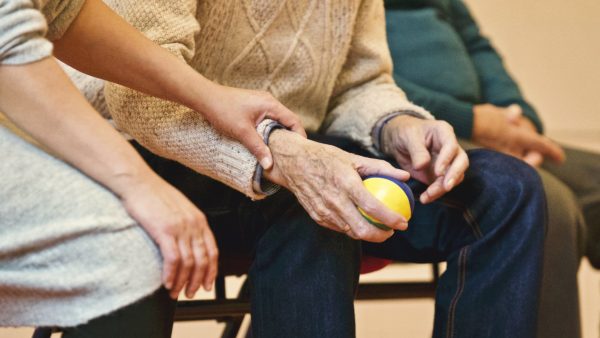Many individuals across the United States may occasionally help a loved one with errands, rides to and from medical appointments, or activities of daily living (ADLs) without realizing that they are serving as informal caregivers (a.k.a., family caregivers). From 2015 to 2020, the number of informal caregivers jumped more than 20 percent, from 43.5 million to 53 million. Based on that data, approximately 21 percent of Americans are informal caregivers. The Urban Institute estimates that the number of Americans aged 65 and older will double between 2000 and 2040, and those above 85 will nearly quadruple. Although informal caregiving spans all ages, the trends of increasing informal caregivers and an aging population are inextricably correlated.
The National Alliance for Caregiving (NAC) and AARP released Caregiving in the U.S. 2020 – part of a research series released every five years to follow trends in informal caregiving. The report found that from 2015 to 2020, the number of informal caregivers caring for more than one person increased by six percent, and the number that had difficulty coordinating care increased by seven percent. Simultaneously, four percent more informal caregivers rated their health as fair or poor.
Informal caregivers face several challenges: More time spent giving care, which limits their personal time, increased difficulty navigating the system, care recipients with a higher acuity of needs, and the lack of respite or adequate support for informal caregivers. As discussed in Caregiving in the U.S. 2020, two of the most pressing challenges are self-identification or validation of the informal caregiver role and the financial sustainability of these roles.
Want more daily health intelligence from Third Horizon Strategies? Sign up for Tea Leaves – a free daily newsletter capturing a rundown of the most important health industry activity!
Self-identification. One of the most significant barriers is that many individuals serving in the role of informal caregivers do not recognize there is a formal definition for the care they provide. Informal caregivers often see helping a loved one or friend with ADLs or coordinating health care activities as necessary or even human, but not something official. If an individual does not acknowledge informal caregiving, they may be naturally less likely to access necessary supports and resources directed at those individuals caring for someone in an informal context. Conversely, a person who acknowledges their role as an informal caregiver is more likely to seek resources through various means, like financial reimbursement, access to ADL support, or even digital tools.
Financial sustainability. Reimbursement structures are not comprehensive enough to cover all caregiving-related costs, even in the most mature models. According to Caregiving in the U.S. 2020, 45 percent of caregivers had one or more financial impacts. 34 percent had at least two financial impacts. Informal caregivers serving Medicaid beneficiaries may receive reimbursement through self-directed Medicaid services. States use Medicaid 1915 waivers to develop home and community-based services (HCBS) to meet the needs of people who prefer long-term care services and support in their home or community rather than in an institutional setting. These programs allow individuals to receive care in the comfort of their homes. HCBS waivers are also one of the most efficient ways for caregivers and care recipients to be reimbursed for caregiving services. However, it must be noted that if the care recipient does not qualify for Medicaid, they cannot access this program, leaving them with few reasonable solutions to cover the cost of an informal caregiver. Furthermore, Medicare does not reimburse informal caregivers, and commercial insurance is difficult to navigate and not comprehensive.
In an effort to help address these challenges, several organizations have recently introduced digital tools to support informal caregivers. For example, Archangels has a platform that gives informal caregivers a care intensity score. This score provides informal caregivers a perspective on the intensity of their caregiving duties compared to others in similar positions. They can then share the score with others to coordinate assistance if needed. Or take ianacare, a digital platform that helps to encourage, empower, and equip family caregivers with practical tools and supportive communities so no caregiver is alone. The platform co-founders have personal experience with caregiving, helping to shape the company into a caregiver-centered community. The ianacare platform allows caregivers to create various support groups that can be tapped into at the push of a button.
While there are many other public and private programs that support informal caregivers and care recipients and significant work is being done to support informal caregivers, much more is needed. Adequate support begins with awareness and acknowledgment. Once informal caregivers are recognized for their critical role in the health care system, work to create better financial reimbursement structures, a more navigable system, and informal caregiver-focused respite programs are needed to support this population.
THS conducted this research to support efforts for United States of Care and United Solutions of Care.

